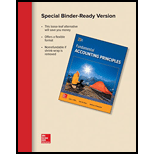
Concept explainers
Concept Introduction:
Labor Cost Variance: The difference between the
• Actual man hour rate varies from the standard man hour rate and/or
• Actual efficiency of labor employed varies from the standard efficiency.
Therefore, Labor Cost Variance is the sum of (i) Labor Rate Variance and (ii) Labor Efficiency Variance.
Labor Rate Variance: The difference between the actual rate of per man hour and the standard rate of per man hour is the Labor Price Variance.
Labor Efficiency Variance: The difference between actual man hours and standard man hours is the Labor Efficiency Variance.
The following formulas are used to calculate Labor Cost Variance:
Labor Cost Variance (LCV) = Labor Rate Variance (LRV) + Labor efficiency variance (LEV)
Also, LCV= Standard Cost –Actual Cost of labor
Labor Rate Variance = Standard labor cost for actual hours- Actual labor cost
Labor Efficiency Variance = Standard cost of standard man hours required for actual production units- Standard cost of actual man hours worked.
Labor Cost Variance gives a view of deviations from the set standards which can be either favorable or unfavorable.
To Determine: Direct Labour rate and Efficiency Variance
Want to see the full answer?
Check out a sample textbook solution
Chapter 23 Solutions
Loose Leaf for Fundamental Accounting Principles
- HELParrow_forwardIf blurr image please comment i will write values. please dont Solve with incorrect values otherwise unhelpful.arrow_forwardJones Co. had $61,500 in sales during 2025. During the year, Jones purchased $18,400 in inventory. The company began the year with $4,100 in inventory and ended the year with $1,300 in inventory. In addition, during 2025, Jones received a prepayment of $2,500, which was correctly classified as unearned revenue. What was Jones's gross profit during 2025? A. $38,000 B. $40,300 C. $39,600 D. $42,100 E. None of the abovearrow_forward
- I need the correct answer to this financial accounting problem using the standard accounting approach.arrow_forwardQuine Industries has fixed costs of $600,000 and variable costs are 60% of the selling price. To realize profits of $250,000 from sales of 500,000 units, the selling price per unit: 1. Must be $2.60 2. Must be $3.50 3. Must be $4.25 4. Is indeterminablearrow_forwardAccounting with solutionarrow_forward

 AccountingAccountingISBN:9781337272094Author:WARREN, Carl S., Reeve, James M., Duchac, Jonathan E.Publisher:Cengage Learning,
AccountingAccountingISBN:9781337272094Author:WARREN, Carl S., Reeve, James M., Duchac, Jonathan E.Publisher:Cengage Learning, Accounting Information SystemsAccountingISBN:9781337619202Author:Hall, James A.Publisher:Cengage Learning,
Accounting Information SystemsAccountingISBN:9781337619202Author:Hall, James A.Publisher:Cengage Learning, Horngren's Cost Accounting: A Managerial Emphasis...AccountingISBN:9780134475585Author:Srikant M. Datar, Madhav V. RajanPublisher:PEARSON
Horngren's Cost Accounting: A Managerial Emphasis...AccountingISBN:9780134475585Author:Srikant M. Datar, Madhav V. RajanPublisher:PEARSON Intermediate AccountingAccountingISBN:9781259722660Author:J. David Spiceland, Mark W. Nelson, Wayne M ThomasPublisher:McGraw-Hill Education
Intermediate AccountingAccountingISBN:9781259722660Author:J. David Spiceland, Mark W. Nelson, Wayne M ThomasPublisher:McGraw-Hill Education Financial and Managerial AccountingAccountingISBN:9781259726705Author:John J Wild, Ken W. Shaw, Barbara Chiappetta Fundamental Accounting PrinciplesPublisher:McGraw-Hill Education
Financial and Managerial AccountingAccountingISBN:9781259726705Author:John J Wild, Ken W. Shaw, Barbara Chiappetta Fundamental Accounting PrinciplesPublisher:McGraw-Hill Education





